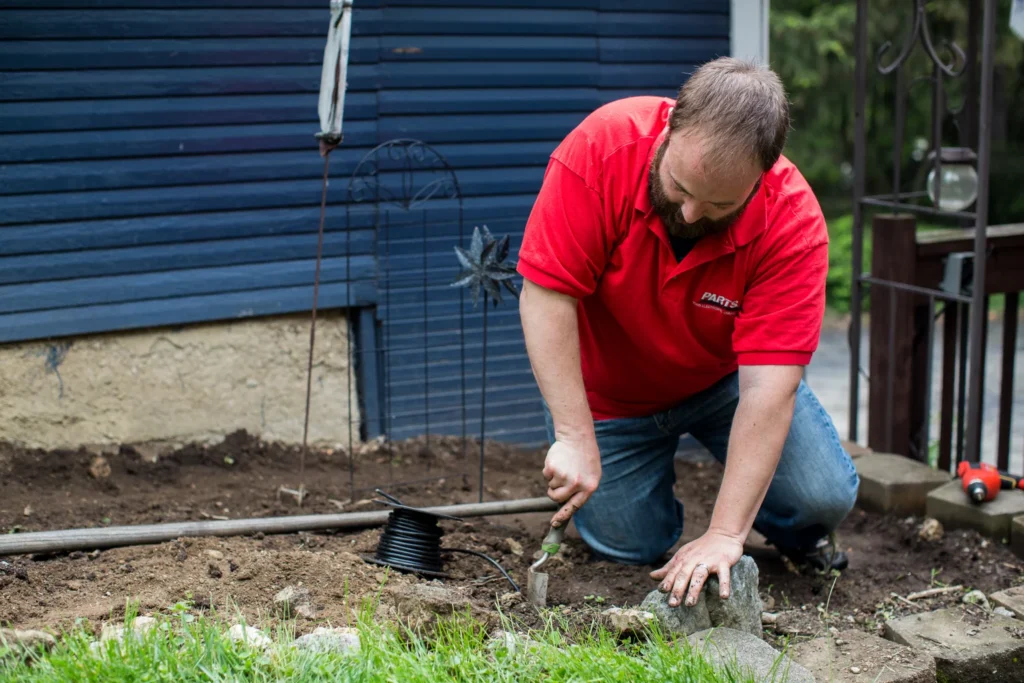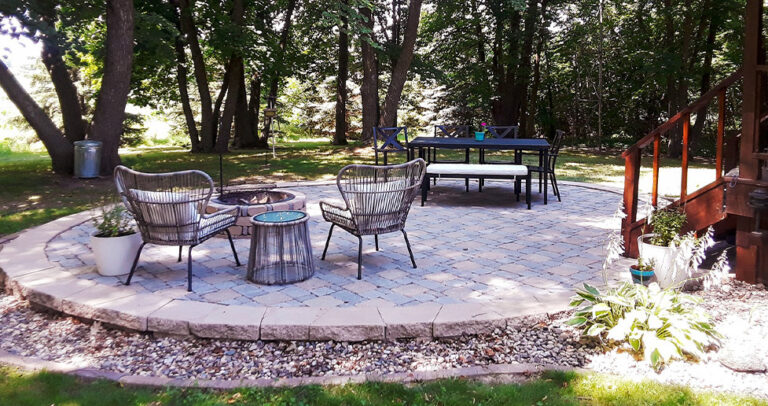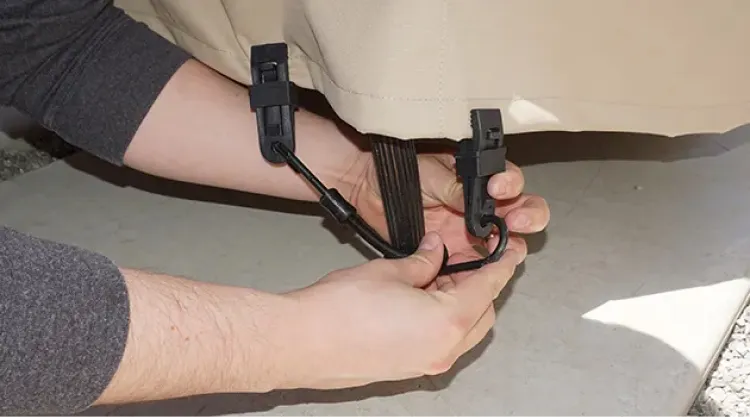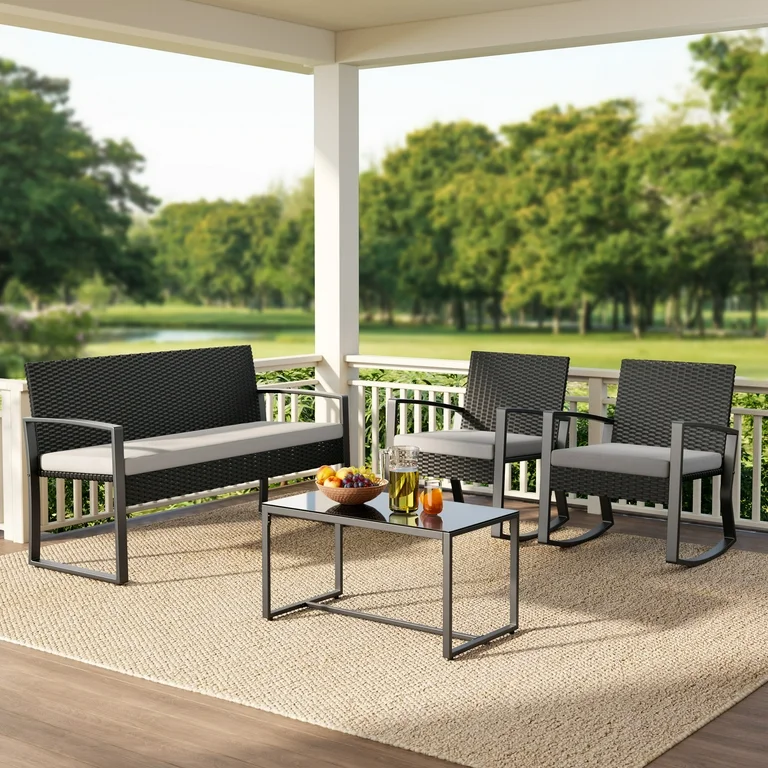Backyard Rock Speakers
Elevate your outdoor gatherings with the perfect blend of music and nature. Backyard rock speakers offer a harmonious mix of high-fidelity sound and natural aesthetics, providing an immersive listening experience without disrupting the beauty of your garden. Whether you’re hosting a barbecue, enjoying a quiet evening, or simply basking in the serenity of your outdoor space, these speakers are designed to enhance every moment.

Crafted to withstand the elements, backyard rock speakers are not just about the music; they’re about creating lasting memories. With easy installation and versatile design, they fit effortlessly into any landscape, promising an auditory backdrop that’s as reliable as it is enchanting. Dive into outdoor audio and discover how these rock speakers can transform your leisure time into an extraordinary experience.
How Do Backyard Rock Speakers Work?

Understanding the mechanics of backyard rock speakers is key to appreciating their role in enhancing your outdoor space.
These cleverly designed audio devices merge high-quality sound technology with the natural aesthetics of your garden, allowing you to enjoy your favorite tunes without disrupting the landscape’s visual harmony.
The Technology Behind the Sound
At their core, rock speakers are similar to any other speaker, using drivers to convert electrical signals into sound waves. However, what sets them apart is their design. Encased in a rock-like shell, these speakers are engineered to withstand outdoor conditions while delivering clear and powerful audio.
Components and Materials
The typical backyard rock speaker contains:
- A robust outer shell: Often made from weather-resistant materials like silicone or plastic composites, it mimics the texture and color of real stone.
- Drivers: These are the heart of the speaker, usually comprising a woofer for low frequencies and a tweeter for high frequencies, ensuring a full-range sound experience.
- Crossover circuitry: This divides the audio signal into high, low, and sometimes mid-range frequencies, directing them to the appropriate driver.
Sound Propagation
Rock speakers are designed to disperse sound over a wide area. This means you can place them throughout your garden and still enjoy a consistent sound level without any one area being too loud.
Installation and Setup of Rock Speakers
Setting up rock speakers is a straightforward process, but it requires careful planning to ensure optimal sound coverage and aesthetic integration into your garden.
Choosing the Location
- Consider the layout: Place speakers where they can blend in with the surroundings and provide even coverage.
- Avoid obstructions: Make sure the speakers are not blocked by large objects that could interfere with sound travel.

Connecting the Speakers
- Wired vs. Wireless: Decide whether you want wired speakers, which require running cables, or wireless ones, which might need batteries or solar charging.
- Power source: Ensure there is an accessible power outlet for wired speakers or a sunny spot for solar-charged ones.

Final Adjustments
- Test the sound: Once installed, play music at different volumes to check for any dead spots or overly loud areas.
- Make tweaks: Adjust the speaker placement or settings as needed to achieve the best sound quality.

Are Backyard Rock Speakers Waterproof?
When incorporating electronics into your outdoor space, durability against weather conditions is a top concern. Backyard rock speakers are designed to bring your favorite music to the garden without the worry of damage from the elements.
Weatherproof Qualities of Rock Speakers
Rock speakers are built to endure outdoor environments. Manufacturers often use materials and designs that resist water, dust, and extreme temperatures.
Materials and Construction
- Outer Shell: Typically composed of UV-resistant materials to prevent fading and weathering.
- Seals and Gaskets: These components protect the internal electronics from moisture ingress.
Ratings and Standards
- IP Rating: Look for an Ingress Protection (IP) rating, which indicates the level of sealing effectiveness against elements like dust and water.
- Certifications: Certifications from recognized standards organizations can affirm the speaker’s weatherproof claims.
Maintaining Your Rock Speakers Through the Seasons
Regular maintenance can extend the life of your rock speakers and ensure consistent performance.

Routine Checks
- Inspect Seals: Regularly check the seals for any signs of wear or damage.
- Clean Surfaces: Wipe down the speaker surfaces to prevent dirt buildup, which can affect sound quality and aesthetics.
Seasonal Precautions
- Winter Care: In areas with severe winter conditions, consider covering the speakers or bringing them indoors.
- Summer Heat: While most rock speakers can withstand heat, avoid placing them in areas where they might overheat, such as enclosed spaces or direct sunlight for extended periods.
Do Backyard Rock Speakers Need to Be Plugged In?
Choosing the right power source for your backyard rock speakers is crucial for their functionality and ease of use. Let’s explore the options and steps to ensure your speakers are powered correctly for uninterrupted enjoyment.
Exploring Power Options: Wired and Wireless Solutions
Backyard rock speakers come in both wired and wireless models, each with its own set of considerations for installation and use.
Wired Rock Speakers
Wired speakers are known for their reliability and consistent power supply. Here’s how to set them up:

Finding a Power Source
- Locate an outdoor outlet: Ensure it’s within reach of your speaker’s location.
- Use outdoor-rated extension cords: If the outlet is too far, choose cords that can withstand outdoor conditions.
Running the Wires
- Plan the route: Avoid high-traffic areas to prevent tripping hazards.
- Bury the wires: For a cleaner look and safety, bury the wires at least a few inches underground.
Connecting to the Speaker
- Follow the manufacturer’s instructions: This ensures a secure and proper connection.
- Test the setup: Before finalizing the placement, test the speaker to ensure it’s working correctly.
Wireless Rock Speakers
Wireless speakers offer flexibility and ease of installation. Here’s what you need to know:

Battery-Powered Speakers
- Check battery life: Ensure the speaker’s battery can last through your intended use.
- Keep spare batteries handy To avoid interruptions during use.
Solar-Powered Speakers
- Position in sunlight: Make sure the speaker’s solar panel gets adequate sunlight.
- Understand charging times: Know how long it takes to charge fully for optimal use.
Bluetooth Connectivity
- Pair with your device: Follow the steps to connect your speaker to your music source.
- Consider range: Ensure your music source stays within the speaker’s Bluetooth range for uninterrupted audio.
How Do You Set Up Backyard Rock Speakers?
Setting up backyard rock speakers is a task that, when done correctly, can greatly enhance your outdoor audio experience. Here’s a detailed guide to help you through the process, ensuring that every step is clear and straightforward.

Step-by-Step Installation Guide
Installing your rock speakers involves several key steps, from choosing the right location to connecting them to your audio source.
Choosing the Ideal Location
- Survey your space: Walk around your yard to identify potential spots for your speakers.
- Consider sound travel: Place speakers where they can deliver sound evenly across your desired listening area.
Preparing for Installation
- Gather tools and materials: Depending on your speaker type, you may need shovels for burying wires or batteries if they’re wireless.
- Check the weather: Ensure you have a clear day ahead to avoid complications from rain or wind.
Installing Wired Speakers
- Map out the wire path: Plan where your wires will run from the audio source to each speaker.
- Bury the wires: Dig a shallow trench to lay the wires, following safety guidelines to avoid any underground utilities.
Setting Up Wireless Speakers
- Charge the speakers: If they’re battery-powered, make sure they’re fully charged.
- Find the best position: Place solar-powered speakers where they’ll get plenty of sunlight.
Connecting to an Audio Source
- Wired connection: Attach the speaker wires to your audio system, ensuring a secure and stable connection.
- Bluetooth pairing: For wireless speakers, follow the manufacturer’s instructions to connect to your device.
Tips for Optimal Sound and Aesthetics
Once your speakers are installed, it’s important to fine-tune their placement and settings for the best performance.
Sound Testing
- Play various types of music: Test different genres to see how the sound carries in your outdoor space.
- Adjust the volume: Find the right level that’s audible without being overwhelming.
Visual Integration
- Camouflage the speakers: Position them among plants or rocks to make them less noticeable.
- Check from different angles: Ensure the speakers look natural from all viewpoints in your yard.
Final Analysis
Backyard rock speakers are a fantastic way to enhance your outdoor space with music that complements the natural environment. They offer a blend of aesthetic appeal and functional durability, suitable for any garden or patio. For the best experience, consider the speaker’s power requirements, placement for optimal sound distribution, and maintenance to ensure longevity.
Embrace the harmony of sound and scenery in your backyard retreat, and let the rhythm of nature dance with the beat of your favorite tunes. Remember, the key to a successful setup is not just in the technology but in the thoughtful integration into your personal oasis. Enjoy the melody of the outdoors!
Disclosure: Our blog contains affiliate links to products. We may receive a commission for purchases made through these links. However, this does not impact our reviews and comparisons. We try our best to keep things fair and balanced, in order to help you make the best choice for you.






